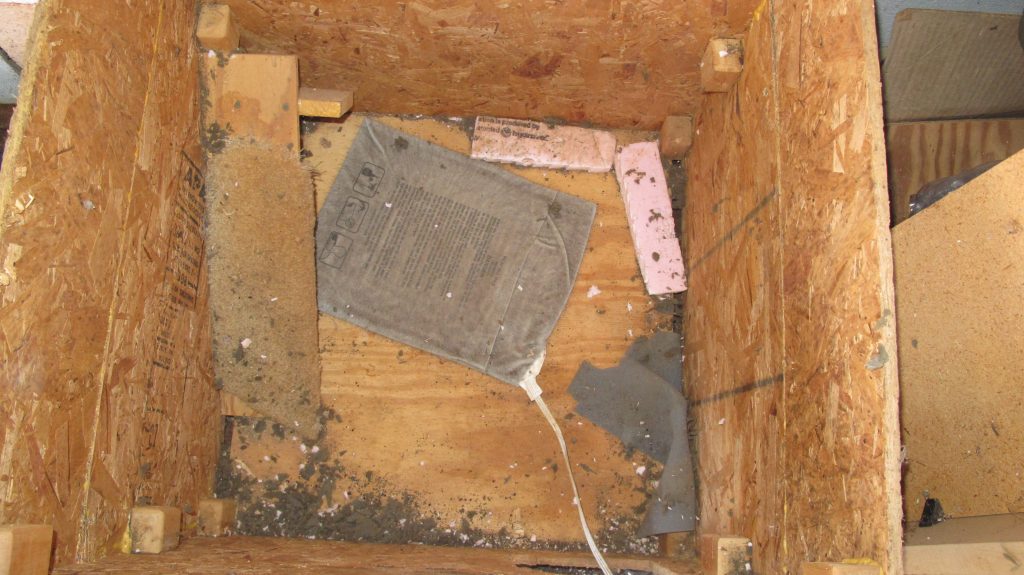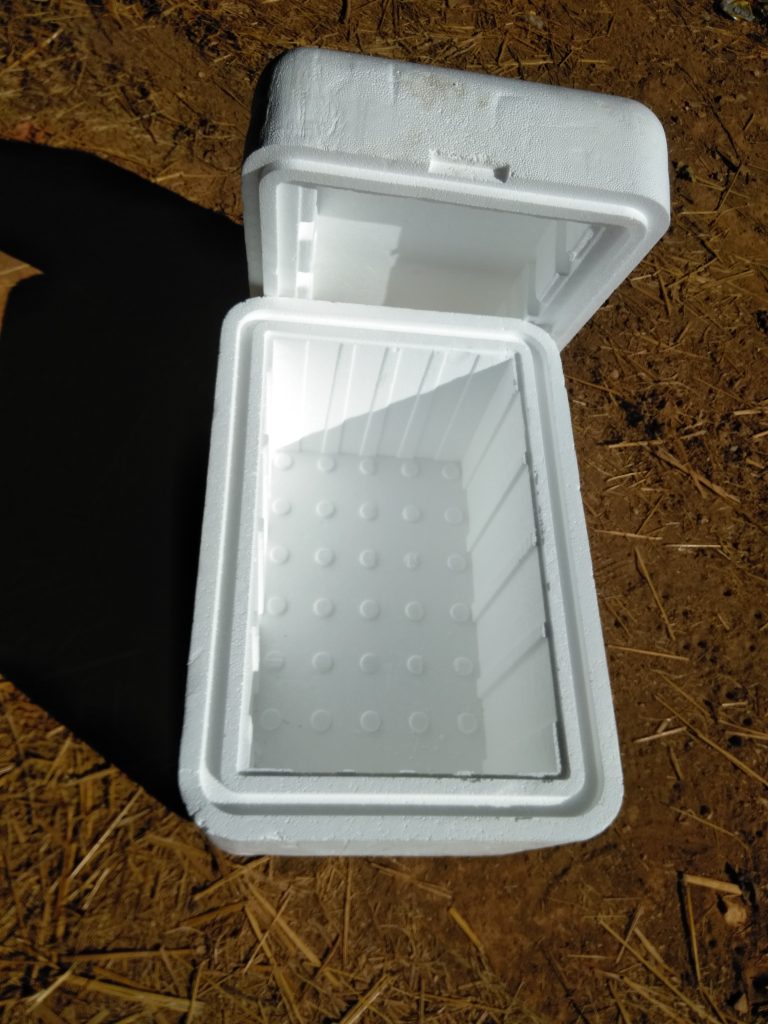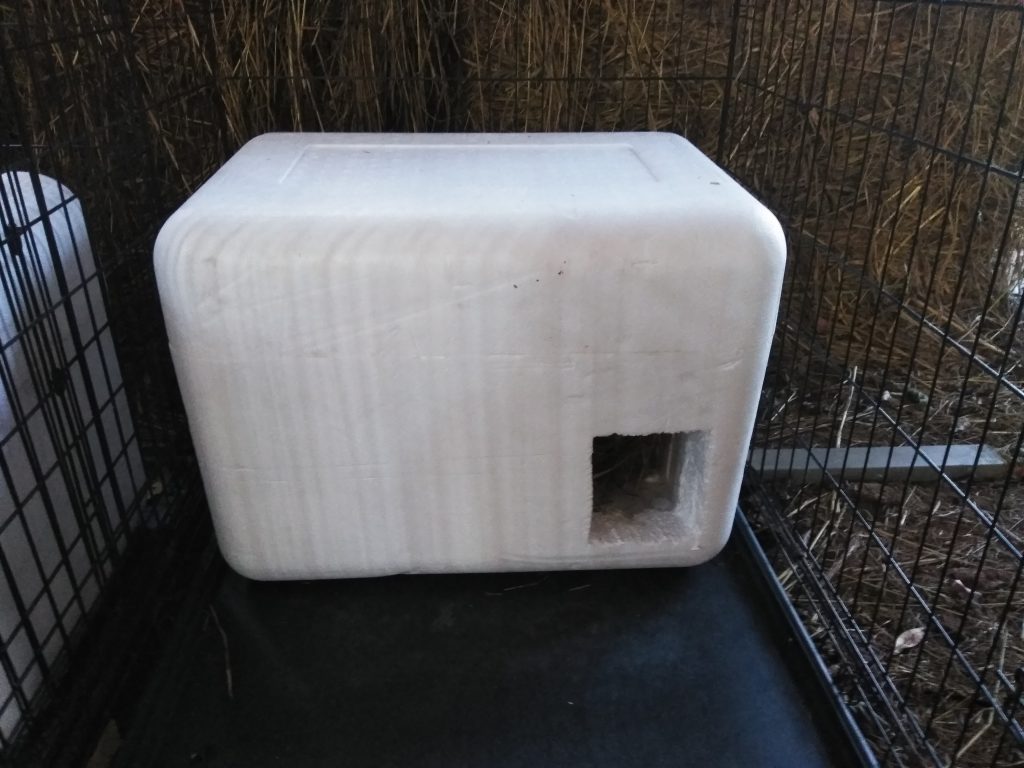Greetings and Salutations;
One of the activities I have been involved in for many years is helping feral cats lead better lives. At the very least, we who do this will trap, fix, and return them to their colonies. This has several benefits, including avoiding floods of kittens, some pretty nasty health issues, and, aggressive behavior that can cause fights and injury. One task that we take on is providing habitats for the cats, to protect them a bit from the extremes of weather that they are forced to deal with on a daily basis. I decided to collect some links to online resources here, and talk about how *I* go about the task.
Why should we help out the cats? Because I am sure some are going to raise this question, there are good reasons to work to create a stabile colony in an area.
- Some people advocate killing the cats. This is a bad idea not only because it often ends up being a painful and cruel death for the animal, but, if a colony is eliminated, it will simply provide more territory for OTHER cats to move in. This can result in even MORE cats in the area. It can also cause rodent problems.
- Feral cats do a huge amount to keep down the rodent population. Some folks claim they are a serious danger to birds, but, I am not entirely convinced this is truth. Perhaps in very constrained areas – like small islands – cats can be a significant force. However, for an open area, they would far rather chase mice and rats, over birds. BIRDS can fly after all, and cats cannot! If the Colony is maintained, with a Guardian that feeds the cats on a regular basis, this cuts back on the predation of birds also.
- A managed colony will not grow, as the cats are all fixed. In the long term, the colony itself may disappear naturally, as the lifespan of a cat with unfettered access to the outdoors is around seven years. At worst, it will remain static, as individual cats move in to replace a cat that dies. These end up being “TNR”ed, of course.
Now, what does any animal need in the cold of winter and heat of summer? A safe, insulated habitat for them to take refuge in. I have made several, and spent very little money on any of them. For example, I have, on my porch, a two-story habitat I made several years ago for a pregnant feral to use. I got the materials from construction scrap, both from my house, and sources on Craigslist, and paid nothing for any of it. The basic structure is a 24″ cube, made from 1/2″ plywood, with corners re-enforced with 2″x2″ stock, I ripped down from 2″x4″ scraps. The top is removable, and, there is a floor, supported by more 2″x2″ stock, about half way up the box. The upper chamber, reached via a ramp and a hole in the floor, is heavily insulated, with foam from a discarded mattress set. The bottom floor is insulated with a sheet of 1/2″ rigid foam, and has a heating pad in it. The feral cats REALLY like this structure and use it quite a bit in the winter.

Under the Top, Insulation lining the top floor. 
The Top Floor, and access doorway 
The Bottom Floor with heating Pad 
Overall View of the Cat Condo
By painting the outside, with a weather-resistant paint, and adding a slanted, metal roof to it, this condo design would work well out in the weather too. Note: The Condo is supported on four bricks, to raise it up off the floor a bit. a similar support should be used in an outdoor setting.

In many cases, though, a very adequate habitat can be made from nothing more than a foam cooler! All that is required is to get a cooler, cut a 5.5″ hole in one side, and find a way to hold the lid on. This can be done with duct tape wrapped around the cooler, a weight, or, using Great Stuff foam to glue the lid in place.


I prefer the first two options, as it is good to be able to open up the habitat for cleaning later on. After cutting the hole for the entrance, which should be done about 2″ or so up the side of the cooler, pack a thick layer of straw in the bottom of the cooler, and set it out. The cats will find it, and use it. It is important to use straw, not hay, because the latter is wet still, and can be a problem in below-freezing weather. Straw is very dry, and provides excellent insulation. The pictures along with these comments are of converted coolers I use when re-homing feral cats to barns. I found them on Craigslist for free, and they work great! As a side note, when getting ferals as barn cats, they should be kept in the cages for a month, fed every day, and interacted with as they calm down.
There are many resources on the Net for plans for inexpensive or free habitats. Here are some links:
- There is a collection of suggestions on Pinterest
- A discussion of TNR programs and feral cat habitats from NeighborhoodCats.org
- AlleyCatAdvocates has some excellent plans and suggestions for safe, feral habitats
- Here, We have a mixture of commercial and DIY habitats.
- HausPanther.com has a great set of designs for more durable habitats, and, the matierals used can be from recycled political signs and the like! Good for the Earth, Good for the cats!
- ASPCAPro.com is another Good Resource for plans.
- And here is a fellow who recycles disused and discarded Coleman type coolers into habitats. These are often discarded and can be acquired for free.
- Large, foam containers can be acquired from almost any pet supply store. Fish and crickets are shipped in them, and, very often, they are simply discarded after being emptied. They are HAPPY to give them away and keep them out of the waste stream.
I hope these are helpful, and that it will also get you to look at Feral Cats as a valuable resource, instead of a pest to be eliminated!
God Help us All!
Bee Man Dave
